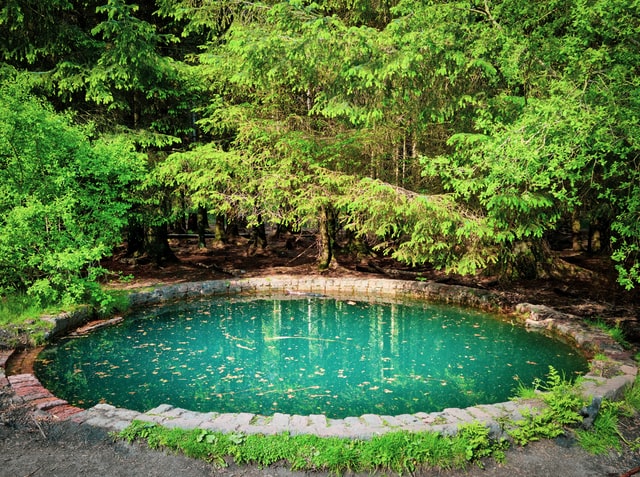Aeration has many benefits, but what exactly is the best method? This article will explain Biological Oxygen Demand (BOD), Turbulent diffusion, and Submersed aeration. It will also give an overview of Fountains’ Achilles’ heel. Read on to learn more about the advantages and disadvantages of each type of aeration. After you’ve finished, you can decide which method is best for your lake.
Biological Oxygen Demand (BOD)
The Biological Oxygen Demand (BOD), also known as the biochemical oxygen requirement, is the total amount of oxygen that an area of water requires. The higher the BOD, the more organisms and microbes are needed to break down the polluting organic matter. This value is an indicator of the pollution levels in a lake. Biological oxygen demand is a measure of the oxygen uptake by microorganisms, and higher biochemical oxygen demand is a sign of high pollution.
To measure BOD, collect a water sample and place it in a bottle, pointing downstream. Then, fill the bottle gradually while avoiding turbulence since it will add oxygen to the example. Afterward, tilt the bottle and keep it under the water. Once the sample is collected, record the results on the field data sheet. To ensure accurate results, it is best to take the piece from the same spot every few days.
Turbulent diffusion
The effects of human activities on water chemistry can negatively affect dissolved oxygen (DO) concentrations in lakes. These activities increase chemical or biological oxygen demands, reduce surface aeration, and decrease water-to-volume ratios. In some cases, humans can cause these effects by creating impoundments that slow water velocities and increase depth. Such impoundments also reduce aeration because they release water with low DO concentrations.
The physics behind turbulent diffusion in lakes can be explained by using Fick’s second law of diffusion. Diffusion coefficients are commonly used in atmospheric science to describe the turbulence produced by a turbulent flow. However, the physical mechanisms of turbulence vary considerably from one area to another, and different theories often use distinct models. The best model will be the one that reflects the dynamics of the given lake aeration and allows it to achieve its desired goals.
Submersed aeration
A submerged aeration system can help lakes and ponds improve water quality and reduce the need for costly dredging. It can be customized to meet the needs of a specific waterbody. Professionals in the field will consider a waterbody’s size, shape, and depth to determine the right system. They can use bathymetry and depth-sensing technology to help determine the best way to achieve these goals.
For a surface aeration system to be successful, the water must be at least a half-mile deep. To achieve this, a weather-protected on-shore compressor is used to release air through a subsurface tube. The air bubbles transport low-oxygen water from the bottom to the surface, mixing it with ambient oxygen. Continuous vertical mixing helps to increase oxygen concentration in water bodies by releasing the air at regular intervals. For remote aquatic areas, solar-powered systems are available.
Fountains’ Achilles’ heel
Fountains are great for aerating lakes and ponds, but they have limitations. While they’re good for small, round bodies, they can’t reach deep water. You’ll need a different system if your lake or pond is more than six feet deep. In addition, fountains’ Achilles’ heel is their low pumping rate. Depending on the size of your lake or pond, you may need to buy more than one fountain to ensure your water body receives enough oxygen.
Water-filled ponds can also smell bad. Fountains help prevent the formation of muck and bacteria by moving the top layer to the bottom of the lake. Aeration also encourages aerobic bacteria that break down organic material in water bodies, which is much more effective with oxygen. Aeration helps maintain the fragile ecosystem of your pond, which keeps water clean and odor-free.
Permit requirements
If you live in Minnesota and want to aerate your lake, you should first understand the permit requirements. You can receive an aeration permit through mail or email. It’s important to note that a lake aeration permit is required if the process will adversely affect the public’s access or neighboring riparian owners. If you plan to use your aeration system to prevent ice from forming on your lake, you must also post signs that warn swimmers that the lake is not open to the public.
The DNR has created an informational webpage that permits information, including links to forms and instructions. The webpage also contains helpful resources, such as videos describing the requirements for a permit, how to fill out the application, and how to prepare required technical documentation. In addition, a technical worksheet is available for use in Construction in Floodway applications.
Benefits
Proper lake aeration can mitigate a range of problems in water quality. Distributing oxygen throughout the water column allows aquatic plants to thrive and prevents the buildup of bottom sediment. It can also reduce the need for dredging in the future. These benefits make proper lake aeration essential to many integrated lake management programs. The following are some additional reasons why you should consider installing a lake aeration system.
Diffuse aeration prevents stratification, which can reduce oxygen levels in deeper water. It also helps prevent the accumulation of vegetation under thick ice. Additionally, it helps keep the water clean and reduces algae growth. Besides this, it can help maintain the balance of vegetation in a lake, improving fish health. Lastly, diffused aeration can help improve water quality by eliminating toxins, enhancing alkalinity, and stabilizing pH levels.

